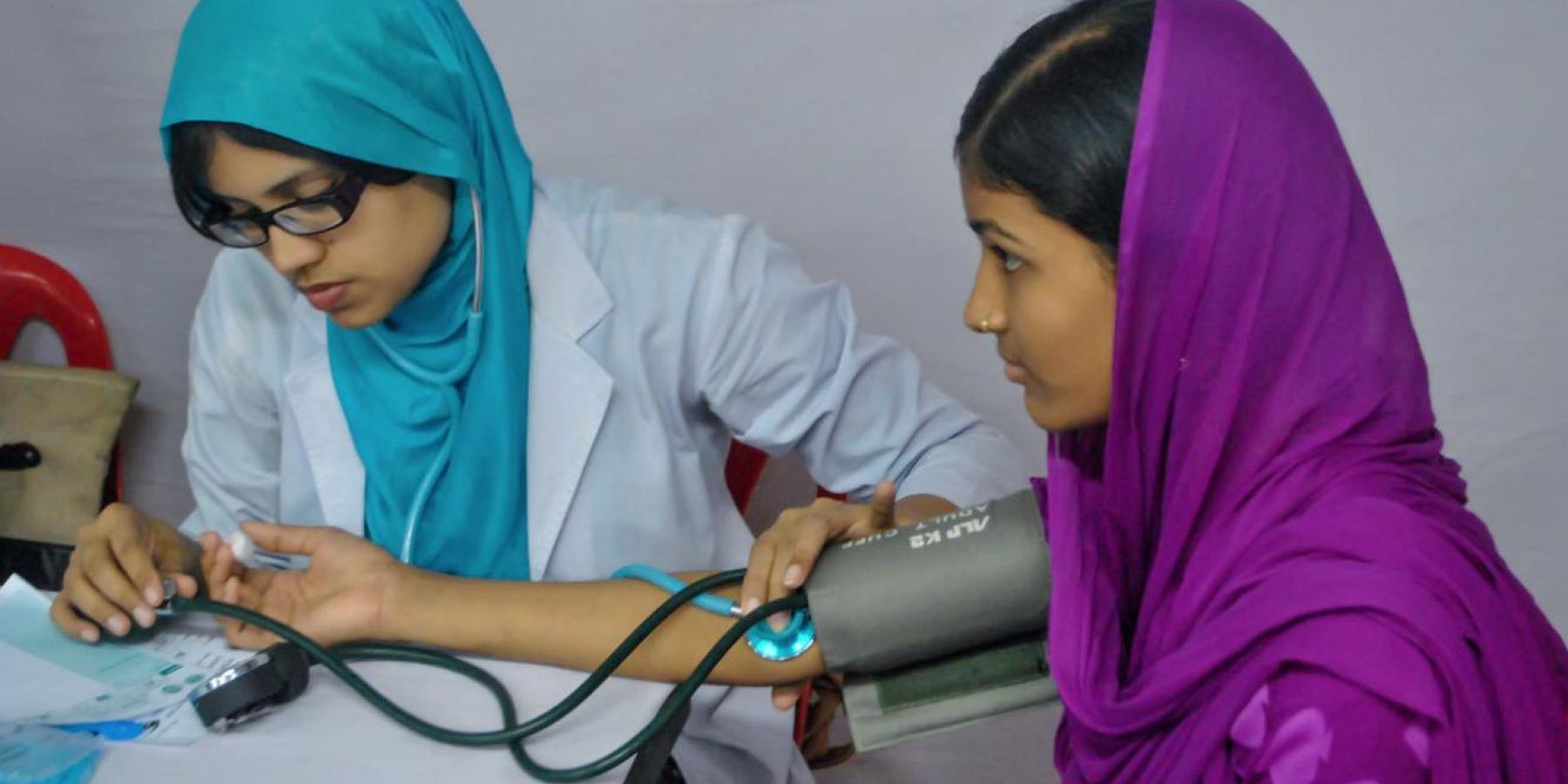Under pressure: hypertension and kids
Hypertension - or high blood pressure - puts millions of kids and teens at high risk for future NCDs.

Hypertension - or high blood pressure - puts millions of kids and teens at high risk for future NCDs.
Hypertension, or high blood pressure, is one of the most common causes of preventable disease worldwide. It’s a leading cause of stroke, ischaemic heart disease, other vascular diseases, type 2 diabetes, and kidney disease, and is directly linked to more than 8.5 million deaths each year.
Yet, despite being straightforward to diagnose and relatively easy to treat with low-cost drugs and healthy habits, over the past 30 years, the number of adults living with hypertension worldwide has doubled – rising from an estimated 331 million women and 317 million men in 1990 to 626 million women and 652 million men in 2019.
Another alarming fact: hypertension prevalence has increased even more drastically among children and adolescents – on average globally by fourfold in the past 30 years, from 1.3% to 6.0% of kids. An additional 10-14% of kids and teens have elevated blood pressure, or “pre-hypertension”. There is strong evidence that paediatric hypertension tracks into adulthood, and is associated with premature cardiovascular disease, kidney disease, type 2 diabetes, and other NCDs. This makes paediatric hypertension a major public health threat, and pushes millions of children towards a chronically sick future.
High salt intake, lack of physical activity, and genetic predisposition are all risk factors for paediatric hypertension, but evidence strongly suggests that overweight and obesity are the key factors behind its increasing prevalence. For instance, the risk of hypertension is 2.6 times greater in overweight children and 9.2 times greater in obese children. Furthermore, the prevalence of overweight and obesity among children and adolescents has risen at a rate that corresponds to that of hypertension – from 4% in 1975 to 18% in 2016. Obesity alone, on the other hand, has risen by tenfold during the same period of time. When only considering this group of at risk children, the proportion who are afflicted with hypertension is much greater, with estimates ranging from 20 percent up to 47 percent.
Childhood overweight and obesity was once mainly a problem of wealthy countries, but as processed food and beverages become cheaper and more widely available, these conditions are now skyrocketing in low- and middle-income countries. In 2000, only around one-fifth of low-income countries had an adolescent population in which at least 10% were classified as overweight; in 2016, three-quarters of those countries met that threshold. Although levels of overweight and obesity are rising fastest in LMICs, this does not mean they have stopped rising in high-income countries. Since 1980, the prevalence of obesity among children and adolescents in the US, for example, has tripled.
Gathering reliable data on paediatric hypertension can be challenging, as it is not well monitored. Nearly half of adults with hypertension worldwide in 2019 were unaware of their condition, and this percentage is even higher among children. Significant disparities also exist in this regard, with lower rates of hypertension diagnosis, treatment, and control in LMICs and marginalised communities.
There is a strong case for dramatically stepping up implementation of proven policy responses for primary prevention and health promotion. These measures include those recommended by WHO as part of the Global Action Plan on NCDs, particularly in relation to healthy diets, and those included in WHO technical packages, such as ACTIVE (physical activity) and REPLACE (transfats elimination).
It’s important that kids and teens have their blood pressure monitored at routine health checks. Paediatric hypertension – like hypertension in adults – usually shows no symptoms. However, it is a key risk factor for many chronic conditions, especially when accompanied by overweight or obesity. Hypertension in kids can often be brought down to normal levels by maintaining a healthy weight, getting enough exercise, and eating a healthy diet. But this is often easier said than done, and can depend largely on a child’s environment and their family’s economic status.
For those who don’t manage to lower their blood pressure as kids or teens – or who are never diagnosed – paediatric hypertension is likely to carry into adulthood. This puts today’s children at high risk of becoming adults living with type 2 diabetes, kidney disease, heart disease, and other NCDs. Multi-morbidity – or the presence of two or more chronic conditions – is quickly becoming the new normal around the world. Health systems will need to adapt to this shift with integrated care that manages multi-morbidities together. This becomes even more important in the context of an aging population – governments need to act now on prevention to avoid a heavy toll for treatment in the future.
Countries can reverse unhealthy trends like rising hypertension and obesity: we know how to do it with tried-and-tested initiatives that are affordable for all countries. Implementing them guarantees big returns: they will not only help millions of kids and teens avoid a lifetime of chronic disease, but will also have huge benefits to health systems and to national and global economies.